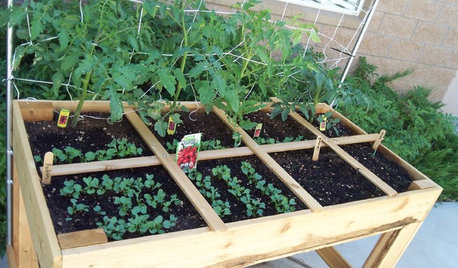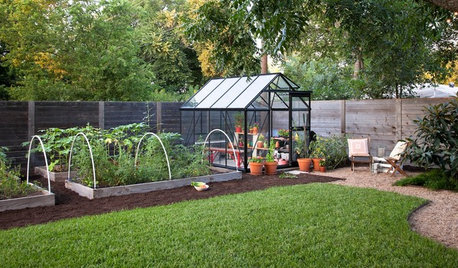On maximizing the okra harvest
Donna
10 years ago
Related Stories

GARDENING GUIDESMaximize Harvests With Square-Foot Gardening
This efficient edible-gardening technique can help people who are short on space
Full Story
GARDENING GUIDESSummer Crops: How to Grow Okra
Go for the gumbo with this quick-growing edible that brings colorful pods and delicate flowers to a summer garden
Full Story
KITCHEN DESIGNKitchen Design Fix: How to Fit an Island Into a Small Kitchen
Maximize your cooking prep area and storage even if your kitchen isn't huge with an island sized and styled to fit
Full Story
EDIBLE GARDENSHouzz Call: What Did You Grow This Summer?
Let’s celebrate the homegrown fruits and vegetables of the season. Post your pictures and tell us about your harvest
Full Story
WINTER GARDENINGExtend Your Growing Season With a Cold Frame in the Garden
If the sun's shining, it might be time to sow seeds under glass to transplant or harvest
Full Story
EDIBLE GARDENSA Formerly Weedy Lot Now Brims With Edibles and Honeybees
Photographers transform their barren backyard into an oasis filled with fruit, vegetables, honey, eggs and more
Full Story
BUDGETING YOUR PROJECTHouzz Call: What Did Your Kitchen Renovation Teach You About Budgeting?
Cost is often the biggest shocker in a home renovation project. Share your wisdom to help your fellow Houzzers
Full Story
SMALL SPACES10 Tips for Chic Little Bathrooms
Get more visual appeal and storage in less space, following the lead of these stylish compact bathrooms
Full Story
SELLING YOUR HOUSE10 Tricks to Help Your Bathroom Sell Your House
As with the kitchen, the bathroom is always a high priority for home buyers. Here’s how to showcase your bathroom so it looks its best
Full Story
HOUZZ TOURSHouzz Tour: The Concord Green Healthy House
New home built for efficiency and flexibility finds its place in historic New England neighborhood
Full StoryMore Discussions








lovesblooms
fusion_power
Related Professionals
Wrentham Landscape Architects & Landscape Designers · Suffern Landscape Architects & Landscape Designers · Taylorsville Landscape Architects & Landscape Designers · Clermont Landscape Contractors · Springfield Landscape Contractors · Berkley Landscape Contractors · Cerritos Landscape Contractors · Cliffside Park Landscape Contractors · East Hanover Landscape Contractors · Ellicott City Landscape Contractors · Florham Park Landscape Contractors · Westford Landscape Contractors · Winchester Landscape Contractors · Clearfield Landscape Contractors · Parker Driveway Installation & Maintenancelovesblooms
nc_crn
sunnibel7 Md 7
DonnaOriginal Author
nc_crn
fusion_power
sunrisemadness
HU-515564542